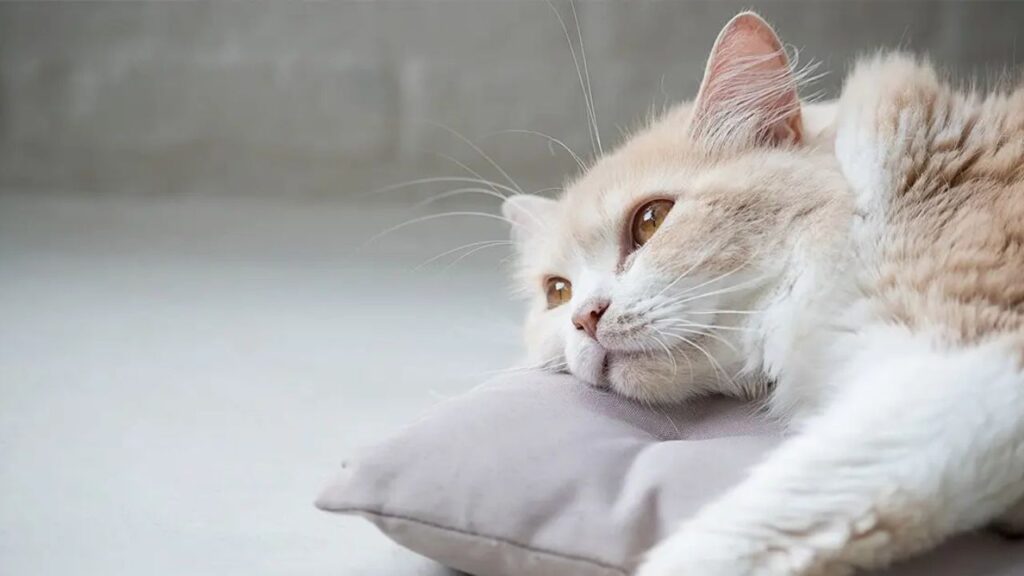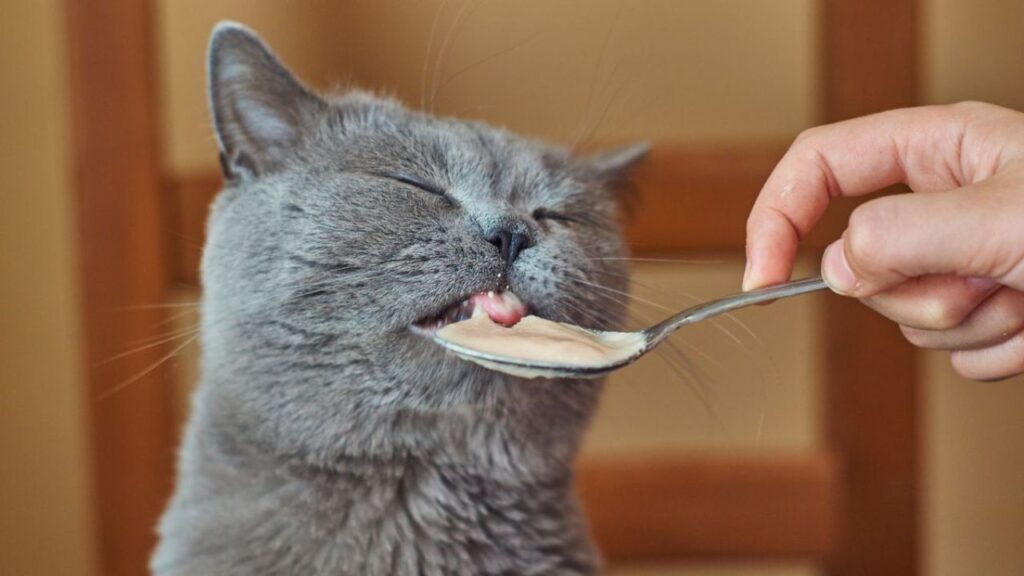Cats are masters of hiding their discomfort, but dehydration is a health issue that cannot be ignored. Just like in humans and other animals, dehydration in cats can lead to severe complications if left untreated. As a responsible cat owner, it’s essential to understand the symptoms of cat dehydration so you can take action quickly. In this guide, we’ll explore the signs, causes, risks, and ways to treat dehydration in cats.
Contents
Why Is Dehydration So Dangerous for Cats?
You might have heard it before: water is essential for life. But have you ever stopped to think about just how vital hydration is for your cat’s health? Cats, like humans, rely on water for every basic bodily function, from digestion to circulation. When a cat is dehydrated, their organs can’t perform at their best, which leads to a range of potentially serious health issues.
Dehydration occurs when your cat loses more fluids than they’re taking in. Without enough water, their body starts to function improperly, which can quickly lead to organ failure, especially in older or sick cats. Cats are particularly prone to dehydration because they don’t always drink enough water, especially if they eat dry food or have underlying health problems.
But don’t worry—being able to identify the symptoms of cat dehydration early on can help you take immediate action to prevent further complications.
The Main Symptoms of Cat Dehydration
Knowing how to spot dehydration in cats can make all the difference between a quick recovery and a serious, prolonged illness. Here are the most common symptoms of cat dehydration:
1. Sunken Eyes
One of the first signs of dehydration in cats is sunken or dull eyes. When a cat is dehydrated, their eyes will appear more inward and less bright than usual. This is because the body is not retaining enough water to keep the eyes moist.
2. Dry Mouth and Gums
If your cat’s mouth and gums feel dry or sticky to the touch, they could be dehydrated. Gently rub your finger along your cat’s gums—if they feel dry, this is a clear sign of dehydration. Healthy cat gums should be pink and moist.
3. Loss of Skin Elasticity
A simple test can help you assess your cat’s hydration levels. Gently pinch the skin on the back of their neck or between their shoulder blades. If the skin doesn’t return to its normal position quickly (takes longer than 1-2 seconds), it’s a sign that your cat is dehydrated. This is called “skin tenting,” and it happens when the skin loses elasticity due to fluid loss.

4. Lethargy or Weakness
Dehydration can cause your cat to become weak and sluggish. If your normally playful cat is suddenly laying around more than usual, or if they’re showing signs of fatigue after minimal activity, dehydration could be the culprit.
5. Reduced Appetite
A dehydrated cat might also stop eating or show little interest in food. Cats who are dehydrated often have trouble swallowing or chewing due to a dry mouth. If your cat refuses to eat, especially if it’s accompanied by other symptoms like lethargy or sunken eyes, dehydration could be to blame.
6. Vomiting or Diarrhea
While vomiting and diarrhea can be caused by a variety of issues, they also contribute to dehydration. If your cat is losing fluids through vomiting or diarrhea and is not replenishing them, dehydration can become a serious concern very quickly.
7. Increased Heart Rate and Rapid Breathing
Severe dehydration can cause your cat’s heart rate to increase, as the body tries to pump blood more efficiently with less fluid. Similarly, they may begin to breathe more quickly or heavily in an attempt to compensate for the lack of fluids.
8. Bad Breath (Halitosis)
Dehydration can also cause your cat’s breath to smell foul. The lack of moisture in the mouth encourages bacterial growth, which leads to bad breath. If your cat’s breath has an unusually strong or unpleasant odor, it could indicate dehydration.
Common Causes of Dehydration in Cats
Dehydration in cats can be caused by a number of factors. Understanding the root cause is key to addressing the issue properly. Here are some of the most common causes of cat dehydration:
1. Inadequate Water Intake
Cats are known for being finicky about their water. They may not always drink enough, especially if their water bowl is in an inconvenient location or if it’s not fresh. Cats that are fed mostly dry food are at an even higher risk of dehydration because dry food contains little to no moisture.
2. Health Conditions
Certain health conditions can make a cat more susceptible to dehydration, including:
- Kidney Disease: One of the most common health problems in older cats, kidney disease can lead to excessive urination and dehydration.
- Diabetes: Cats with diabetes often drink more water but still become dehydrated due to excessive urination.
- Hyperthyroidism: This condition increases a cat’s metabolism and may cause them to drink and urinate more than normal, leading to dehydration.
- Urinary Tract Infections (UTIs): Cats suffering from UTIs may become dehydrated due to frequent urination and discomfort.
- Gastrointestinal Issues: Vomiting and diarrhea from illnesses like infections, parasites, or inflammatory bowel disease (IBD) can quickly cause dehydration.
3. Hot Weather or Overheating
During hot weather or when your cat is overexerting themselves, they may lose fluids through sweating (although cats don’t sweat much) and panting. Cats that are kept in warmer environments or are allowed outside on hot days are particularly vulnerable to dehydration.
4. Medications
Certain medications, such as diuretics (which increase urine production), can also contribute to dehydration. Always follow your vet’s recommendations when giving your cat any medications.
How to Treat and Prevent Dehydration in Cats
1. Encourage Water Intake
The first step after finds symptoms of cat dehydration in treating mild dehydration is to encourage your cat to drink more water. You can try the following:
- Provide Fresh Water: Make sure your cat’s water bowl is always full and refreshed regularly. Cats often prefer running water, so consider investing in a cat water fountain to encourage drinking.
- Add Water to Food: If your cat eats dry food, consider adding a bit of water or broth to their meals to boost their fluid intake.
- Offer Ice Cubes: Some cats enjoy playing with and licking ice cubes, which can help them stay hydrated.

2. Oral Rehydration Solutions
If your cat is mildly dehydrated and refuses to drink enough water, you can try giving them an oral rehydration solution. These solutions, which are available at pet stores or prescribed by your vet, contain electrolytes to help restore hydration.
3. Subcutaneous Fluid Therapy
For cats with moderate dehydration, your vet may recommend subcutaneous fluid therapy, where fluids are injected under the skin to be slowly absorbed into the body. This is typically done by a vet or trained professional.
4. Intravenous (IV) Fluids
Severe symptoms of cat dehydration requires more aggressive treatment. Your vet may administer IV fluids directly into your cat’s bloodstream. This is especially necessary if your cat is suffering from conditions like kidney disease, diabetes, or severe gastrointestinal problems.
5. Treating Underlying Conditions
To prevent recurring dehydration, it’s essential to address the underlying health issues that may be causing it. If your cat has kidney disease, diabetes, or another health condition, your vet will provide a treatment plan to manage the disease and prevent dehydration.
Frequently Asked Questions (FAQs)
1. How do I know if my cat is severely dehydrated? Severe dehydration in cats is indicated by a combination of symptoms such as sunken eyes, dry mouth, lethargy, increased heart rate, and rapid breathing. If you notice these signs, contact your vet immediately.
2. Can I give my cat water from my water bottle or a syringe? Yes, if your cat is refusing to drink, you can use a syringe (without a needle) to slowly administer water or an electrolyte solution into their mouth. Make sure they’re swallowing it.
3. Can dry food cause dehydration in cats? Yes, dry food contains very little moisture, which can contribute to dehydration and your cat may shows some symptoms of cat dehydration. If your cat eats dry food, consider adding wet food or water to their meals to boost hydration.
4. How much water should my cat drink each day? A healthy cat should drink about 2.5 ounces of water per 5 pounds of body weight daily. However, this varies depending on their diet (wet vs. dry food) and activity level.
5. Can I prevent dehydration in my cat? Yes! Ensure your cat always has access to fresh water, feed them a balanced diet that includes wet food, and monitor their water intake. Regular vet check-ups are also essential to catch any underlying health conditions early.
Conclusion
Symptoms of cat dehydration can be subtle at first, but they can quickly escalate into serious health issues. Being able to identify dehydration early and take action is essential to keeping your cat healthy and comfortable. Encourage your cat to drink plenty of water, monitor their health, and work with your vet to address any underlying conditions. With proper care and attention, you can help your cat stay hydrated and healthy for years to come.

